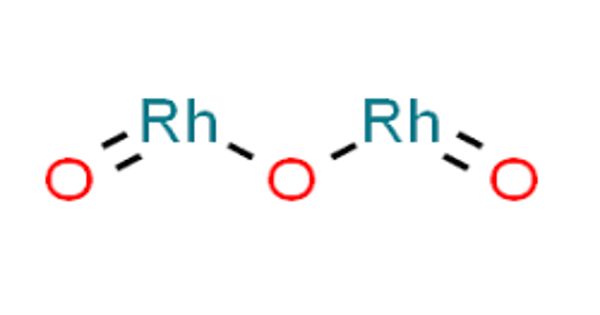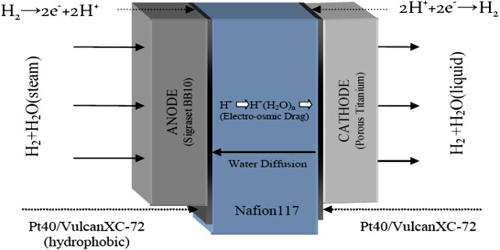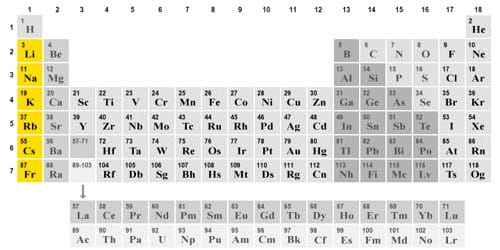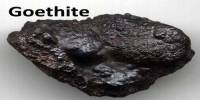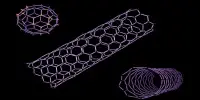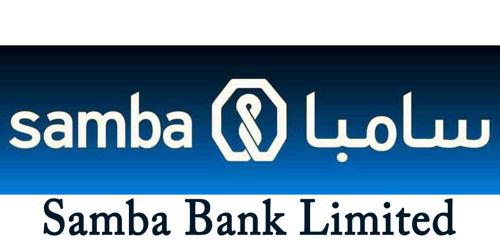Rhodium(III) oxide (or Rhodium sesquioxide) is the inorganic compound with the formula Rh2O3. It is a dark grey odorless powder, insoluble in water, with catalytic properties. Oxide compounds are not conductive to electricity. It is a gray solid that is insoluble in ordinary solvents.
Rhodium Oxide is a highly insoluble thermally stable Rhodium source suitable for glass, optic, and ceramic applications.
Properties
Rhodium oxide films behave as a fast two-color electrochromic system: Reversible yellow ↔ dark green or yellow ↔ brown-purple color changes are obtained in KOH solutions by applying voltage ~1 V.
- Melting point: 1100°C (dec.)
- Density: 8.2 g/mL at 25 °C(lit.)
- Form: Powder
- Color: Yellow
- Specific Gravity: 8.2
- Water Solubility: Insoluble in water, acetone, conc. Hydrochloric acid, Nitric acid, Aqua regia.
Rhodium oxide films are transparent and conductive, like indium tin oxide (ITO) – the common transparent electrode, but Rh2O3 has a 0.2 eV lower work function than ITO. Consequently, deposition of rhodium oxide on ITO improves the carrier injection from ITO thereby improving the electrical properties of organic light-emitting diodes.

Structure
Rh2O3 has been found in two major forms. The hexagonal form adopts the corundum structure. It transforms into an orthorhombic structure when heated above 750°C.
Preparation
Rhodium sesquioxide is obtained by heating rhodium metal to red heat in the air.
4Rh + 3O2 → 2Rh2O3
Alternatively, Rh2O3 may be prepared by igniting rhodium nitrate, Rh(NO3)3.
Treating the sesquioxide with alkali first forms a yellow precipitate of pentahydrate, Rh2O3•5H2O, soluble in acid and excess alkali. In excess alkali a black precipitate of trihydrate, Rh2O3•3H2O is obtained. The trihydrate is insoluble in acids.
Production
It can be prepared by heating the finely divided metal or its nitrate in air or O2. Rhodium oxide can be produced via several routes:
- Treating RhCl3 with oxygen at high temperatures.
- Rh metal powder is fused with potassium hydrogen sulfate. Adding sodium hydroxide results in hydrated rhodium oxide, which upon heating converts to Rh2O3.
- Rhodium oxide thin films can be produced by exposing the Rh layer to oxygen plasma.
- Nanoparticles can be produced by hydrothermal synthesis.
Applications
Use in the catalytic converters of automobiles. It is used to make rhodium metal and its various salts. It is also used as an industrial catalyst in the manufacturing of chemical intermediates such as oxo-alcohols, as well as nitric acid and ethanoic (acetic) acid production. Also, the oxide is a catalyst for hydrogenation.
